 |
|
|
|
 |
|
|
|
|
|
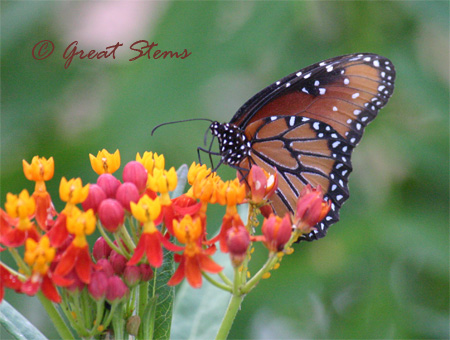 |
|
|
Having a wildlife habitat in your front yard, backyard, apartment balcony, office property, or school brings incredible fun, joy, and beauty while helping restore precious habitat for our native species. It's easy and it's fun -- and it's ok to start small! The best tip I can give you is to be conscious about what you plant in your garden -- learn the wildlife value of the plants you are considering, and then just watch how the animals will find them!
Why create a wildlife habitat at home? Many animal species are in decline or endangered due to habitat loss. As the human population grows, development occurs at the expense of habitats. Places animals once called home have been bulldozed for new shopping centers or parking lots or human homes. Water from creeks, lakes, and rivers is being drained or polluted. Chemical pesticides and fertilizers are causing animal deaths and algae blooms, and invasive plants are pushing out the native species that provide food for the animals. Animals need our help!
|
|
|
|
|
|
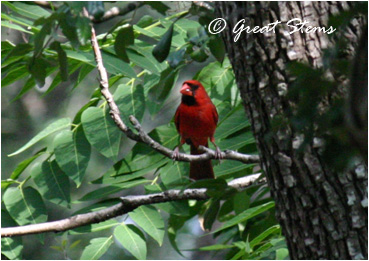 |
|
|
|
All animals need certain basic elements in their habitat in order to survive:
|
|
|
Basic Elements of a Wildlife Habitat
- Food Sources
- Water Sources
- Cover
- Places to Raise Young
- Healthy Environment (to us, that means Sustainable Gardening)
|
|
|
| Every habitat needs to include these basic elements if one hopes to help and attract wildlife. Luckily, there are lots of different ways we can provide the basic elements, and remember, even an apartment balcony can become a wildlife habitat for some animals. Think about the animals you'd like to attract, and let it guide you in how you choose your plants, etc. Say, for example, that you like Northern Cardinals. They love sunflower seeds, oats, other seeds, berries, fruits, and insects, and they raise their young in nests in dense thickets and evergreen trees and shrubs. They need a place to safely drink water and bathe, like a stream or birdbath, and shrubs and trees give them and their fledglings places to hide. In winter they need a dependable food source and evergreen trees for cover. You can set out a feeder and hope they'll find you, but if you want them to make a home near you, you should think about all the elements they need in their ideal habitat. Or you can take a more general approach to creating a wildlife habitat, using the lists below, and enjoy the variety of animals that might come to visit or stay. To create a habitat, you should: |
|
 |
|
|
|
|
|
|
|
The best food sources come from native plants, but you can supplement with year-round feeders. Be sure to pick some plants that are larval host plants so caterpillars can grow to become butterflies. If you like hummingbirds, look for plants with tubular flowers, especially red ones. But there are lots of other options -- food sources can include:
- Caterpillar larval host plants (many lists are available online)
- Seeds
- Berries
- Nectar
- Leaves/Twigs
- Nuts
- Fruits
- Sap
- Pollen
- Suet
- Feeder with Seeds
- Hummingbird Feeder (use 1 part sugar to 4 parts water for nectar)
- Butterfly Feeder
|
|
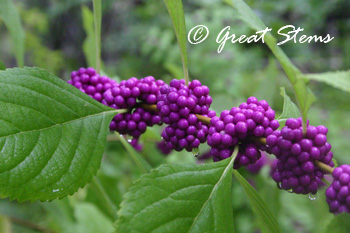 |
|
|
|
|
 |
|
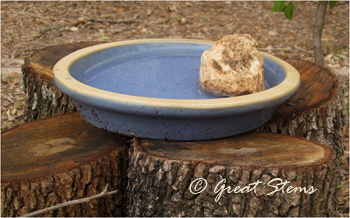 |
Water sources are critical for wildlife due to drought conditions or pollution in many areas. Remember that water sources should have clean water for the health of the animals. If you have a birdbath, saucer, or still-water garden, be sure to change every three days to help prevent mosquitoes.
- Birdbath
- Pond
- Water Garden
- Saucer
- Butterfly Puddling Area
- Rain Garden
- Lake
- Stream/Creek
- River
- Fountain
|
|
 |
|
|
|
|
|
|
Animals need places to hide from predators, bad weather, and humans. Think in terms of layers -- tall trees, medium trees, smaller understory trees, shrubs, tall grasses, flowers and smaller plants, and ground cover. Different animals need plants of different heights for their protection. Of course, cover doesn't always mean plants, as you can see by the list below.
- Trees, tall to small
- Rock piles, rock walls
- Dense shrubs
- Evergreen trees and other plants
- Ground Cover
- Brush Pile
- Log Pile
- Snags (dead trees)
- Meadow/Prairie
- Pond/Water Garden
- Birdhouses
- Toad Abodes (as simple as an overturned broken pot)
|
|
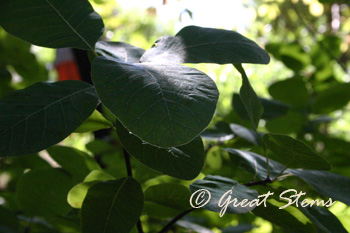 |
|
|
|
|
 |
|
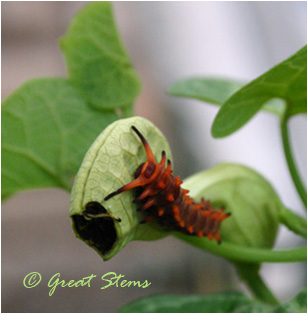 |
|
Many places that provide cover also serve as places to raise young. Remember to think about the different levels to a habitat, too. Imagine the animal you'd love to attract -- if you were that animal, could you safely raise young in your habitat? Places to raise young include larval host plants for butterflies to lay their eggs on, or ponds in which toads and frogs can lay their eggs. But of course, other animals have their own places they raise young!
- Mature trees and shrubs
- Meadow/Prairie
- Host plants for caterpillars
- Snags (dead trees)
- Nesting Boxes
- Dense Shrubs
- Pond/Water Garden
- Burrow
- Cave
- Wetland
- Bee box
|
|
 |
|
|
|
|
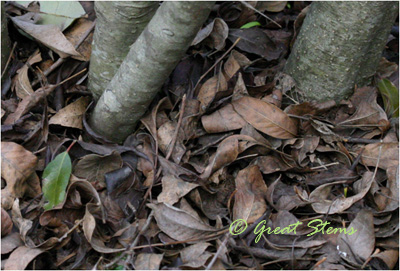 |
|
|
A very important part of any habitat is that the environment needs to be healthy, and the best way to provide a healthy environment is to practice sustainable gardening. The soil is an entire habitat in and of itself -- if you practice sustainable gardening, you're encouraging healthy, nutrient-rich soil full of important microorganisms that will naturally help plants thrive, and all the species in your habitat will benefit (not to mention Earth in general).
- Use native plants. They are adapted to your area and need minimal maintenance.
- Eliminate use of chemical pesticides and fertilizers. Getting rid of chemicals is perhaps the most important part of sustainable gardening and protecting our plant and animal species. Chemicals kill beneficial insects and other organisms. And they cause serious problems in our waterways.
- Use mulch. Mulch helps keep moisture in the ground during hot summers and provides winter protection.You can purchase mulch or possibly get some free from your city, but you can also let dead leaves remain on the ground to provide protection (and compost) to your trees and shrubs.
|
|
- Compost. Compost your old veggies, grass, and dead leaves to return nutrients to the soil and to reduce the burden on the landfill. Healthy soil needs lots of organic matter and will benefit greatly from the compost!
- Reduce your lawn. Lawns take a lot of water, mowing, and other care -- create new wildlife beds instead and make life easier and safer!
- Let lawns go dormant in the summer. Think about how much water you'd conserve and how much money you'd save.
- Xeriscape. Plants that are drought-tolerant both conserve water and save you money.
- Control exotic animal species. Prevent non-native birds and other animals from nesting in your birdhouses and habitat. Examples include European Starlings, House Sparrows, and Grackles.
- Keep cats indoors or be with them outside. Cats hunt and kill for fun. They make an environment a very unsafe place for wildlife.
- Collect rainwater. Help conserve water and prevent runoff issues -- and you'll help save our aquifers, lakes, and streams.
- Create a rain garden. Use plants to help absorb water in areas where runoff and excess rainwater collect.
- Water smart. Use soaker hoses or drip hoses, not sprinklers. Water directly to the root zone, not on the plant leaves, and water in the morning.
- Limit water use. Water is precious and costly -- practice water conservation no matter where you live.
- Reduce erosion. Plants and terracing are two great ways to minimize erosion.
- Practice integrated pest management. Promote beneficial insects that eat target pests. Hand-pick when necessary, and allow acceptable pest levels. Choose plant species adapted to the area, and seek organic methods of pest control. Maintaining healthy plants and soil is the best defense against pest insects.)
- Remove invasive non-native plants. These plants push out the native species that our animals rely upon and cost billions of dollars yearly to remove from parks, streams, lakes, and other natural habitats.
|
|
|
|
|
|
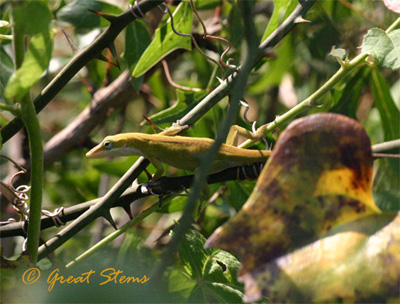 |
|
|
 |
|
|
When you've provided the essential elements for a healthy habitat, you can also help National Wildlife Federation help wildlife by certifying your habitat! And if you like, you can get a nifty sign for your yard. Maybe you'll inspire your neighbors to create a habitat, too! |
|
|
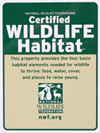 |
|
|
|
 |
|
|
|
|
|
|
|
|
|
|
|
|
|
|
|
|
|
|
|
|
|
|
|
|
|
|
|